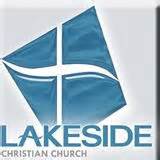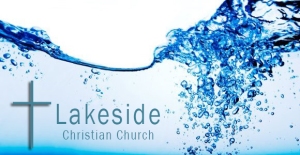
Lakeside Christian Church
The Little Website That Couldn’t
The Story
Lakeside Christian Church is a church of roughly 500 people on the southern end of Springfield, Illinois. The church was formed in the early 1960s, and after several moves and building projects, they ended up at 225 Toronto Rd. in the year 2000, with a brand new facility with space to grow and flourish. Their lead pastor, Jon Morrissette, has been preaching there for over ten years. Lakeside offers 3 services in the morning with contemporary worship, Sunday school classes, childcare, student classes, and children’s worship. They also have multiple groups and events going on at any given time. The men’s and women’s groups are always planning trips and activities. The student groups meet every week and often plan movie outings together. Their college-age ministry is the fastest growing ministry at Lakeside with connections to the University of Illinois just across the highway and many leadership and student connections at Lincoln Christian University. With their fastest growing ministry being college students and teenagers, you’d think this church would be tech savvy enough to connect with their members on multiple social platforms… not so much.
That’s where I come in…I began attending Lakeside in November of 2012 after graduating from college. I grew in my faith quite considerably and made many friends and connections with staff members. I was eventually hired as a Communication Intern at Lakeside in the summer of 2014. I was in charge of their website, social media updates, graphics, video announcements, bulletins, newsletters, mail-outs, etc. Anything that had to do with communicating – internally or externally, visually or verbally – I was asked to oversee. It was not an easy task.
Their website was ancient; their staff members were never on the same page; and I was only getting paid seventy-five dollars per week.
But, I loved my job and the perfectionist in me wanted to get everything done in an orderly fashion. So, working 60 hours per week didn’t bother me. Unfortunately, not much could be accomplished and remain a permanent solution.
The Point
This church has been an incredibly influential part of my life. I want it to be the same way for other people who are looking for a place to feel accepted, loved, and inspired. So, I decided to promote the story of Lakeside through rebuilding their website. This church deserves an image that can accurately represent their mission and desire to love people and love Jesus. There are many people who have been at Lakeside for more than 20 years, watching it grow and change into something new and beautiful. Their experience is worth demonstrating. I only hope that I can accomplish at least two things with this new web design experiment: accurately represent the rich history, warmth, and generosity of Lakeside Christian Church; and successfully lead a new generation of Christians to a church that cares for them.
The Medium
I don’t have much experience with web design.
In fact, the last time I remember writing any type of code was java script in 7th grade as I attempted to customize my Myspace page in order to climb the social pyramid of cool-looking online profiles.
So, in order to make life simpler, I chose a website service (Weebly) to utilize their easy-to-use templates and let it do the heavy lifting for me.
Building a new website, as opposed to a social media account or filming a short video, was the perfect way to bring this historic church into the 21st century. Let me give you an idea of how their digital media platforms were being operated:
- The web and graphic designer was also the full-time Worship Minister.
- The lead pastor was constantly changing his mind about which platforms to use and how to use them… He is a bit of a control freak.
- There were roughly 5 different versions of every message, tweet, Facebook post, and event summary used for 10 different forms of internal and external communication.
- Essentially, there wasn’t any continuity in a community going through information overload, and no one was ever on the same page.
There are many existing communication issues within the church itself, which I’ll have to save for another day. However, a new website is exactly what they need to enhance their online presence.
The Design
Lakeside’s old website platform was incredibly cluttered and boxy. And, I’m not sure why, but most of the graphics are blue… How dreary. So, I tried to stay away from all of that. I wanted the new website to look clean, fresh, and colorful. I avoided using too many rectangular graphics and instead I chose circular icons to keep things visually diverse. I also used multiple color schemes throughout the different pages so I wouldn’t get stuck with one color everywhere. But, I did keep the buttons and links either gray or blue to stick with the original Lakeside color scheme. I created a custom footer at the bottom of the page for easier site navigation, and I incorporated sign up forms and e-mail options for events and upcoming classes. I used some stock photos to enhance the professional look of the site, while also incorporating familiar graphics and photos that were used on the previous website. With this new feel and vision being brought to life through the new website, I can’t imagine that someone seeking a church would look at this and say, “no, that doesn’t look good to me.”
The Audience
Whenever a church-goer moves to a new town or decides to look for a new church, the first thing they will do is a google search. They don’t search Facebook or Twitter, and they certainly don’t flip through the yellow pages. There is a happy medium. The internet is a beautiful thing most people can comprehend in this day and age. Many seniors are capable of “surfing the web”. They may not understand how it all works, but they have seen it done.
But, the target audience for churches is not the “old-timers” who have been attending the same church their entire lives… It’s the younger generation that has slipped through their fingertips.
Everything is interconnected today. You can buy anything you want without stepping foot outside your home. You can talk to your friend, watch your favorite movie, find the nearest fast food restaurant, take a photo, and write a paper all on one device. The only way to reach this generation is to throw yourself at them digially. We have to be aggressive with social media, advertising, web promotion, and all digital forms of communication if we want to capture the attention of the “millennials” for even just one second. The church is reaching out to them desperately. They’re trying to guide the 20-somethings toward a greater life purpose. So, we don’t pound the pavement, we pound the keyboard in hopes of reaching the younger generation and introducing them to Jesus.
Out With the Old

In With the New

 I’m happy that the App is launch ready. I walked across campus in the last couple of days and enjoyed playing with it a lot. It’s actually fun to see the distances changing while you move, and it is even better if you where the one that wrote the lines of code that told them to do so.
I’m happy that the App is launch ready. I walked across campus in the last couple of days and enjoyed playing with it a lot. It’s actually fun to see the distances changing while you move, and it is even better if you where the one that wrote the lines of code that told them to do so.

